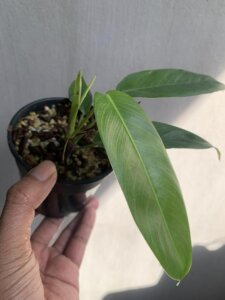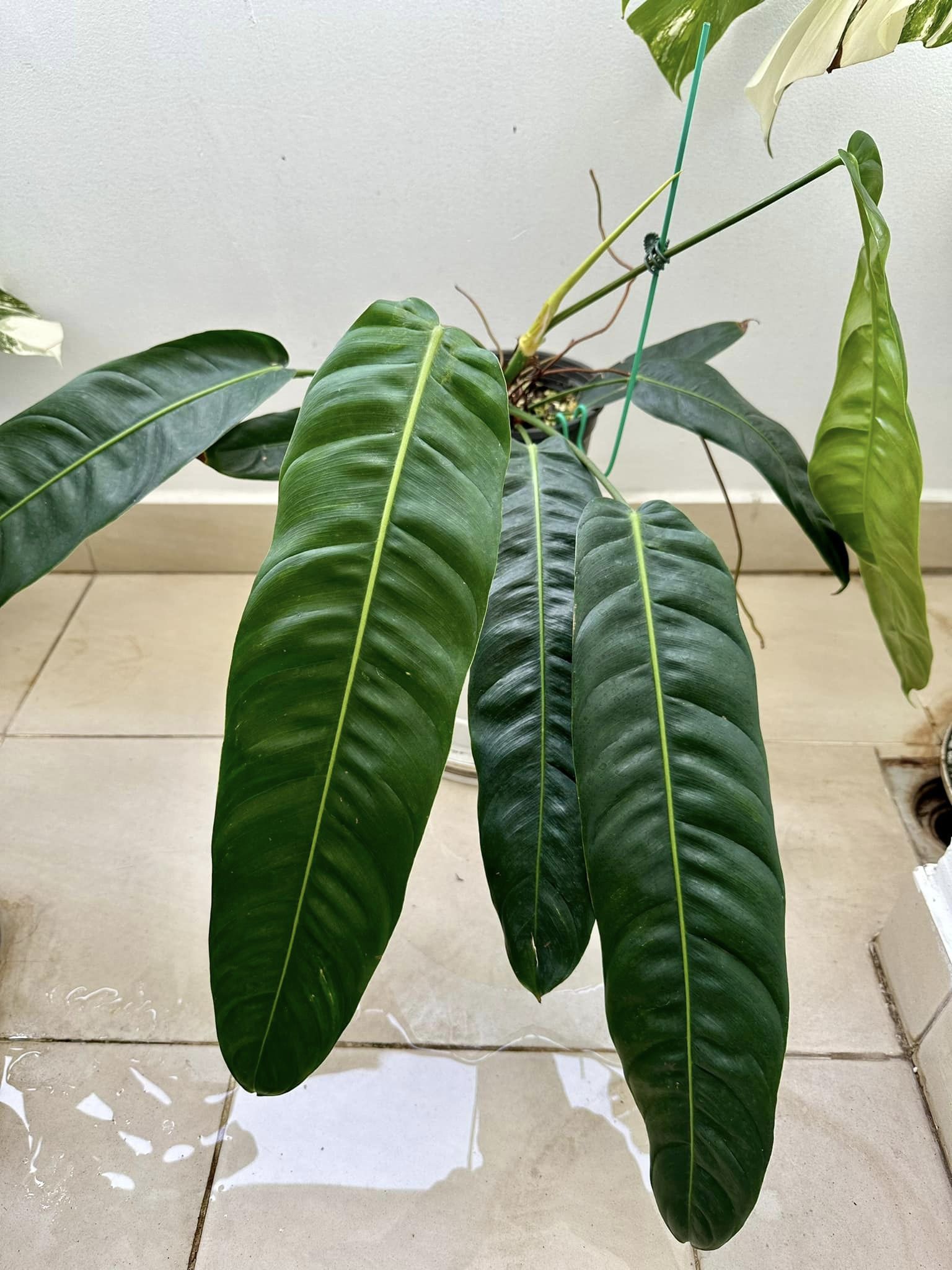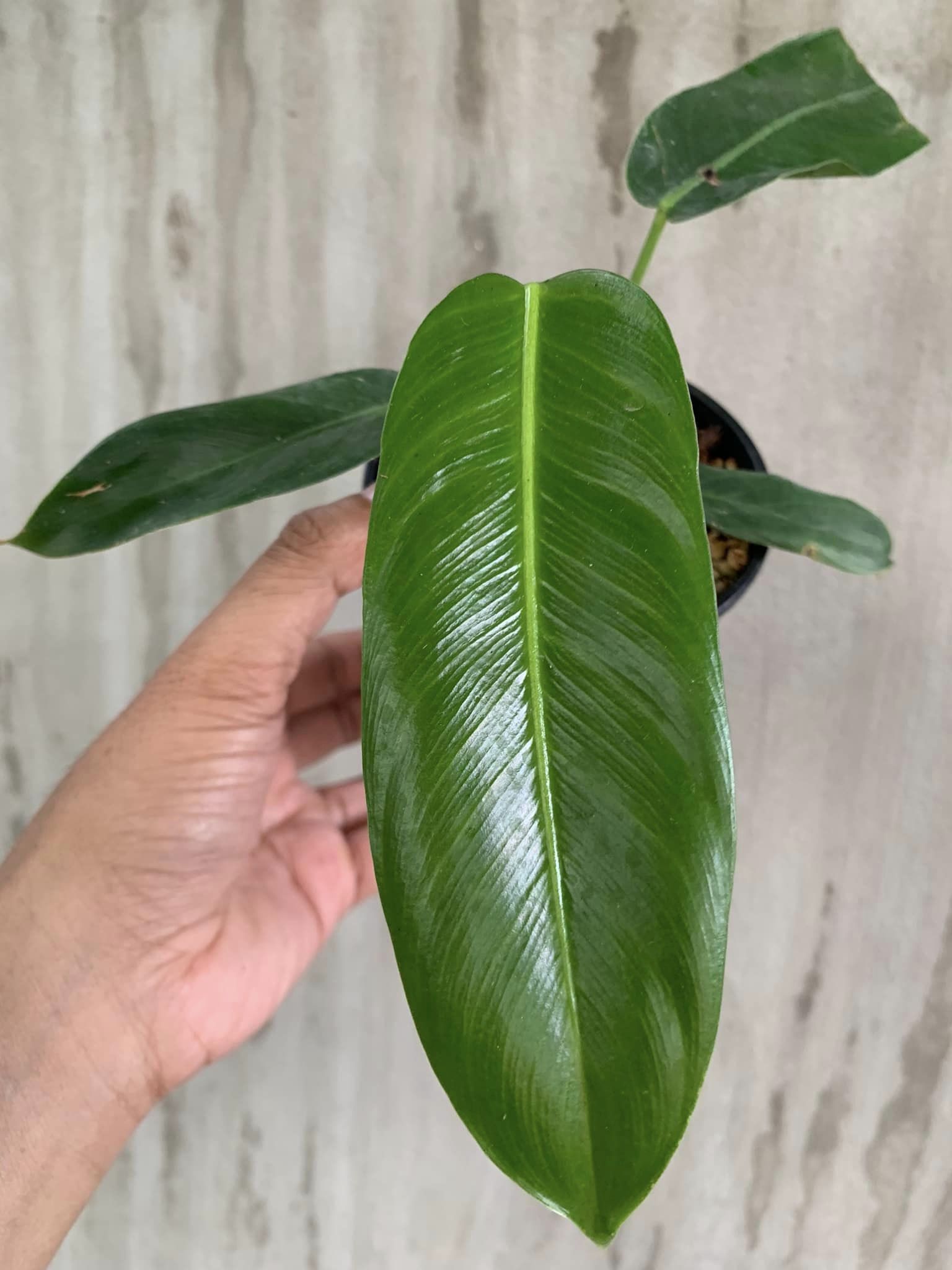Basic Information
Philodendron Patriciae is a rare plant native to Columbia, known for its long elongated wrinkled leaves. Its unique and intricate architectural leaves have made it a highly sought-after houseplant worldwide. Due to its rarity and high demand, this plant is quite expensive.



Light
Philodendron Patriciae thrives in bright but indirect lighting. It is best to provide filtered sunlight that mimics its natural rainforest habitat. Excessive light can harm the plant’s cells and enzymes, which are responsible for its nutrition. This can lead to brown, dry, and brittle leaves as water evaporates more quickly. For indoor placement, placing it near a large window with a sheer curtain to filter the light is ideal. For outdoor placement, ensure that it is in a location protected from intense sunlight and frosty areas.
Water
Regular and moderate watering is crucial for keeping your plant healthy. It is important to wait for the top half of the soil to dry out before watering it again. Usually, weekly watering will suffice, although you may need to adjust the frequency depending on environmental factors. Overwatering can cause root damage, so make sure that your plant has proper drainage and avoid letting it sit in waterlogged soil. If your plant is in a hot or bright spot, it may require more frequent watering. Keep in mind that during the summer, your plant will need a little more water than in the winter. The Patriciae philodendron prefers hard water with a high calcium content. Growers who use tap water with moderate hardness will find that their plants grow well.
Soil
It is essential to use a soil mix that drains well for cultivating healthy plants. You can create your own blend by adding organic materials such as compost, moss, or peat to improve soil fertility. Studies have shown that an ideal mixture would consist of 30% soil and 40% orchid bark with charcoal and sphagnum moss. The pH of the soil should remain slightly acidic, between 5 to 6. You should repot your plants every two to three years to maintain soil health and support plant growth.
Temperature
For optimal growth, it is recommended to maintain a temperature between 55°F (12.8°C) and 90°F (32°C). If the climate is hot, it is advisable to keep the plant indoors to prevent it from being exposed to excessive heat. Additionally, the plant is sensitive to frost, so it’s crucial to maintain a steady, warm temperature during the colder months to ensure its well-being.
Humidity
Philodendron Patriciae thrives in high humidity levels, preferably around or above 75%. Low humidity can hinder growth and negatively affect foliage development. To maintain adequate humidity, it is recommended to mist the plant or use a humidifier, especially in drier indoor environments. The required amount of humidity depends on your desired outcome. If you want to achieve large, long leaves, it is important to keep the plant humid. However, if your only goal is to keep the plant alive and healthy, you do not need to worry too much about humidity.
Fertilizer
For healthy and robust plant growth, it’s recommended to fertilize them every two weeks or less, depending on the light exposure. You can use a balanced nitrogen fertilizer with a soil pH level of 5-6 which is available in two forms – liquid and granules. For liquid fertilizer, mix it with water and spray the plant, and for granules, sprinkle them on the soil surface and water moderately to activate them. Also, supplementing with calcium can be beneficial. It’s suggested to fertilize your plants once a month during spring and summer to encourage their growth.
Growth Rate
The plant is known for its large, heart-shaped, heavily textured leaves, which are its most striking feature. These leaves can grow up to 48 inches in length and exhibit a rippled, dark green color. The growth rate and leaf size are dependent on the care and environmental conditions provided to the plant.
Pet Safety
As with many Philodendron species, Patriciae is likely toxic to pets. Care should be taken to place the plant out of reach of animals to avoid accidental ingestion.
Grow in Semi-Hydro
- Philodendrons, celebrated for their lush foliage and adaptability, thrive in semi-hydroponic systems such as LECA/Pon, thanks to their resilient root systems and preference for consistent moisture.
- Shifting a Philodendron to a semi-hydroponic setting works well using a Nutrient Stagnant Wicking (NSW) method, providing a stable and effective environment for growth.
- Within the LECA/Pon environment, Philodendron roots adapt swiftly, effectively managing any early challenges in adapting to the NSW system.
- For nourishing Philodendrons in semi-hydro systems, a nutrient solution with a concentration around 800-1000ppm is optimal.
- Philodendrons are versatile in adapting to a range of temperature and humidity levels, making them ideal for various indoor settings.
- Regular care involves keeping an eye on the water level in the reservoir and periodically flushing the system to ensure the Philodendron’s healthy and consistent growth.
- If your Philodendron is a climber, it’s a must to look at our Moss Pole guide to have a proper set-up.
Tips
- Regularly mist the leaves, especially if they feel dry, about two to three times weekly.
- Keeping a dish of water nearby is beneficial in warm climates to maintain humidity.
- Occasionally taking the plant outdoors is beneficial, but monitor light exposure and temperature.
- Be mindful of the plant’s frost sensitivity during winter and keep it in a warmer environment.
- Prune regularly to manage size and encourage healthy growth
By following these detailed care instructions, you can ensure that your Philodendron Patriciae grows healthily and remains an attractive feature in your indoor plant collection.
Happy planting! 🌱


